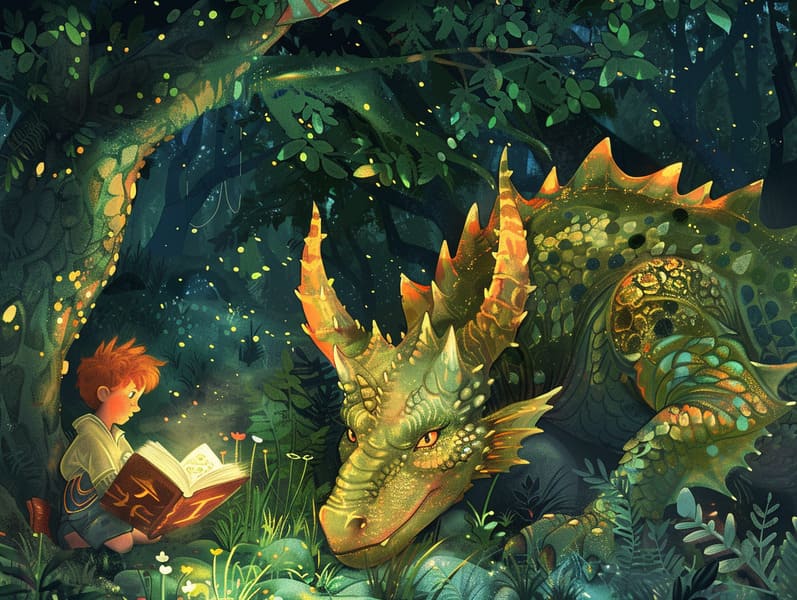The Journey of Ancient Fairy Tales with the Eternal Spell.
The Journey of Ancient Fairy Tales with the Eternal Spell.
Blog Article

Historical fairy tales have deep roots. These tales have been recounted from one generation to the next centuries before they were ever documented. They developed from a variety of societies, including Western traditions. They were initially conveyed among older generations, often carrying themes and messages reflective of the societal norms and beliefs of the time.
The famous Grimm duo, Jacob and Wilhelm Grimm, were among the first to compile and release many of these beloved stories. Their collection, "Grimm's Story Collection," included tales like "Cinder Maid," "The Bread Crumb Trail," and "Snow-White and Rose-Red," which have since become essentials in the world of classic fairy tales. Similarly, Hans Andersen's fantastical stories, such as "The Sea Maid," and "The Ugly Duckling," have stolen hearts worldwide, establishing their place in the pantheon of timeless fairy tales.
Even though they are old, these stories remain as applicable as ever, especially as bedtime stories for kids. These delightful tales are now available in many formats, including richly illustrated books, magical animations, and internet fairy tales.
Their ongoing significance can be connected to several fascinating points:
Vital Lessons: Timeless fairy tales often share important moral lessons. Narratives like "The Tale of the Boy Who Cried Wolf" teach the value of being truthful, while "The Story of the Tortoise and the Hare" exemplify the traits of persistence and modesty. These tales offer young readers clear distinctions between moral and immoral, helping to shape their moral compass in a soft yet meaningful way.
Compassion and Knowledge: Traditional fairy tales frequently present characters facing difficulties and adversities, motivating listeners to identify with their struggles and rally behind their triumphs. For instance, "The Story of Beauty and the Beast" conveys the necessity of seeing beyond the surface to understand the inner being of a being, cultivating understanding and recognition.
Cultural Comprehension: Many fairy tales are deeply ingrained in the cultural contexts from which they were born. Reading these tales can provide intriguing perspectives into different historical contexts, advancing a sense of cultural awareness and awareness.
Fantasy and Imagination: The whimsical elements in timeless fairy tales—magical spells—activate children’s fantastical thinking. These tales lead readers to fantasy realms, unleashing imaginative dreams and a sense of enchantment that continues a lifetime.
Timeless fairy tales are not only spellbinding but also didactic. They serve as fantastical tools in nurturing various mind and heart abilities in the young. When classic fairy tales are voiced, they foster speech development by presenting new terms and meanings and sophisticated sentence structures. This practice also develops auditory perception and attentiveness, as kids track the narrative, anticipating to see what happens next.
Furthermore, conversing about the themes and characters of old fairy tales can nurture intellectual skills and thought processes. Young ones are shown to recognize patterns, forecast, and catch on to cause and effect. These contemplations also aid little ones express their thoughts and feelings, advancing their emotional intelligence.
In today’s cyber age, the availability of web-based fairy tales has made these narratives more obtainable than ever. Online resources and digital apps provide comprehensive collections of famous fairy tales that can be accessed or listened to anytime, anywhere. Fairy tales read aloud are particularly well-liked, presenting an fun way for young readers to savor these entrancing tales. Read-aloud stories and narrated videos carry characters and settings to life, often augmented by spellbinding background sounds and melodies that heighten the tale experience.
The unfading fascination of timeless fairy tales lies in their ability to shift to present days while maintaining their basic principles. Contemporary modernizations of these fairy tales often include more varied protagonists and modern settings, making them meaningful to today’s audience. However, the fundamental themes of braveness, kindheartedness, and integrity remain unchanged, continuing to connect with readers of all ages.
Ancient fairy tales also offer a sense of peace and predictability. They highlight a orderly narrative with a obvious beginning, middle, and end, often coming to a close with the resolution of conflicts and the triumph of right over wrong. This assuredness can be calming for kids, introducing a sense of solidity in an fluctuating world.
Ancient fairy tales continue to entrance and enlighten new generations, maintaining their enchantment and meaningfulness in modern society. As nighttime stories for kids, they make available a perfect blend of charm and enlightenment, boosting moral values, empathy, and creativity. The abundance of web-based fairy tales and the likability of fairy tales narrated ratify that these old tales remain obtainable to new generations.
By sustaining and recounting these fairy tales, we continue to acknowledge the rich tapestry of fables and cultural heritage. Whether you are discovering a richly illustrated book, seeing a internet library, or listening through an audiobook, the enchantment of old fairy tales is always within reach. These fairy tales remind us of the unchanging influence of narratives and its ability to unify us across centuries and lands.
Be it you are browsing a richly illustrated book, seeing a digital library, or listening to an spoken story, the wonder of popular fairy tales is always within reach.
These stories show us of here the enduring strength of narratives and its ability to gather us across centuries and lands, forming a connection that enchants and educates alike.